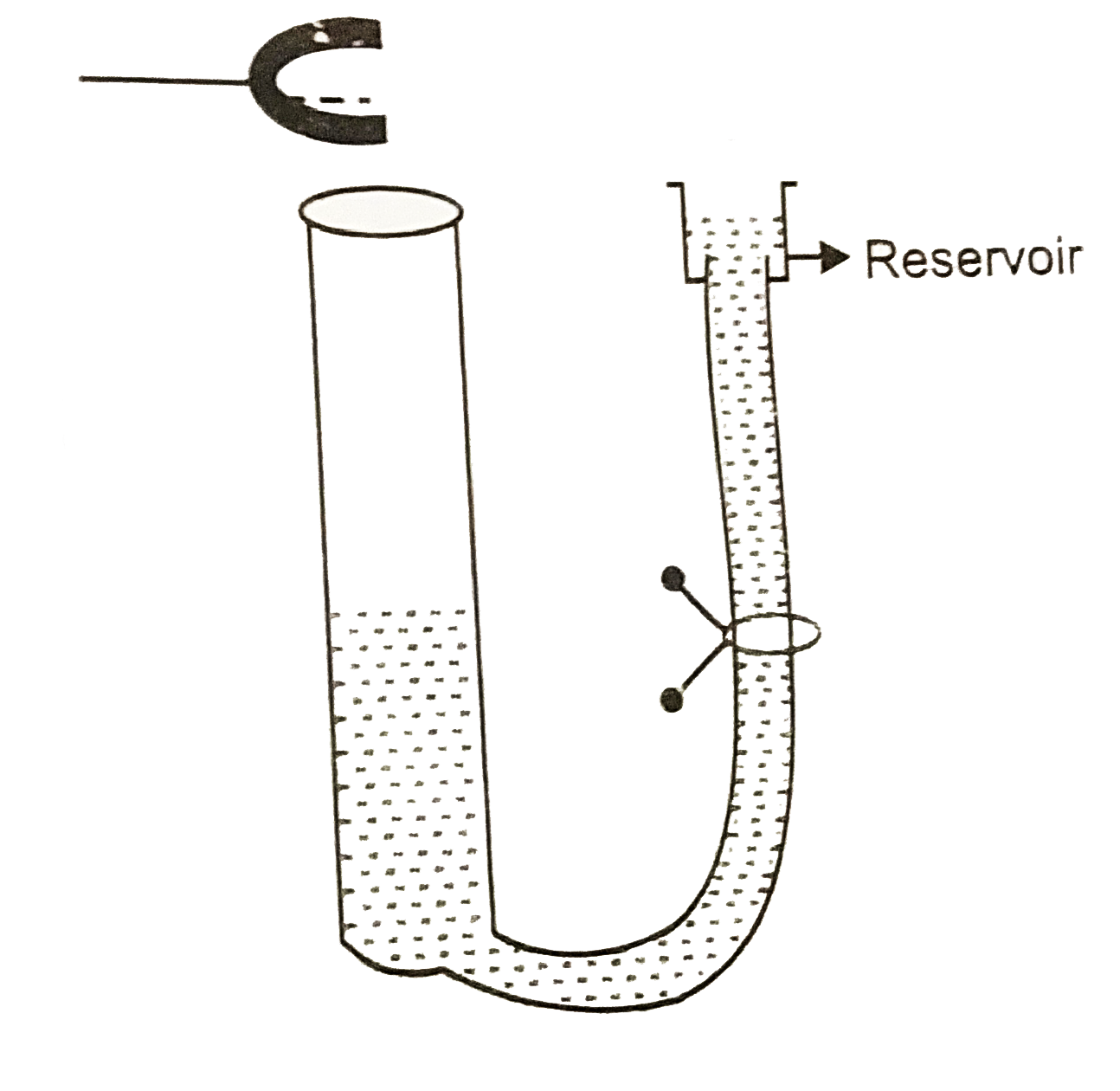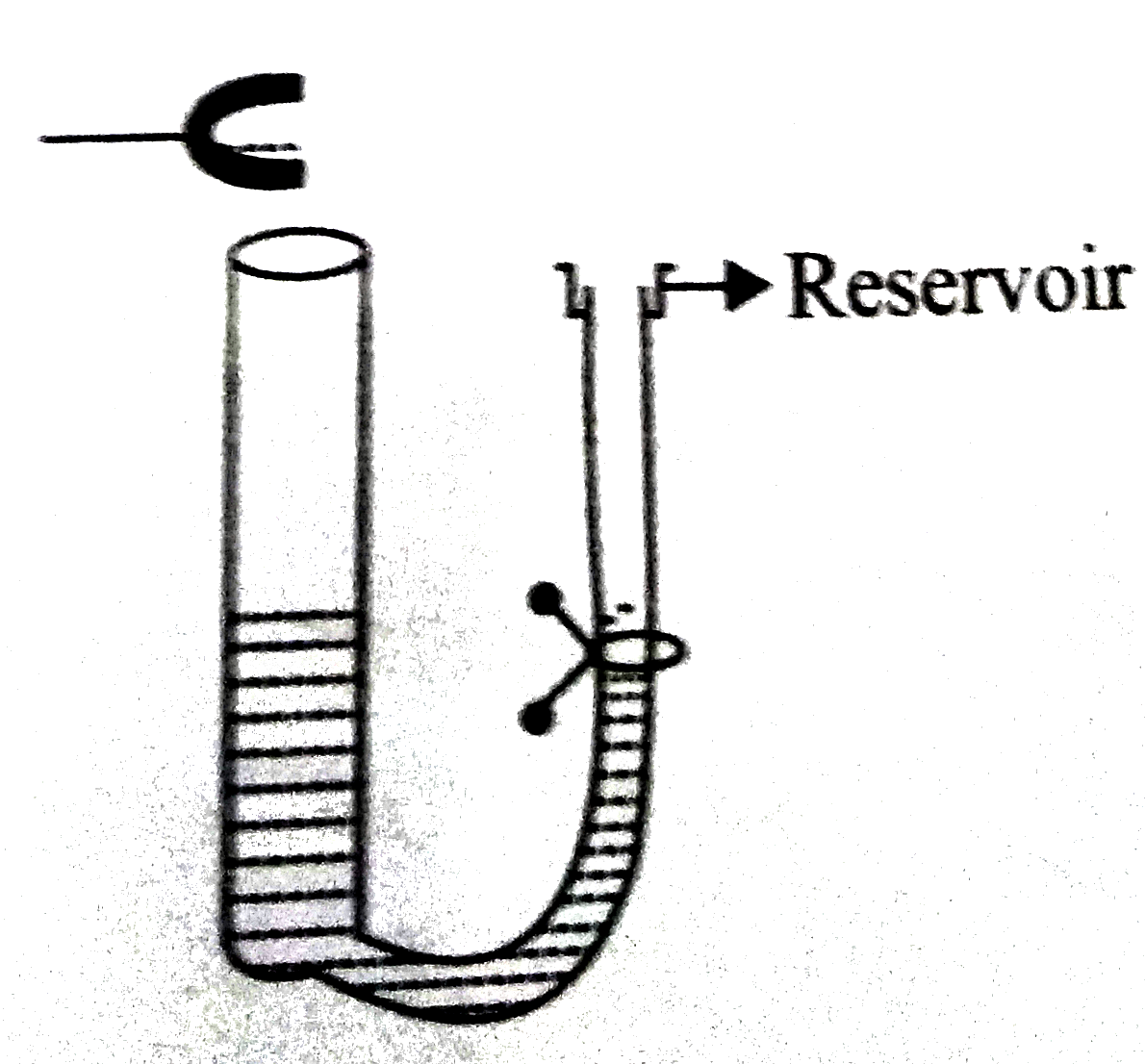A vibrating tuning fork is held over a water column with one end closed and the other open. As the water level is allowed to fall, a loud sound is heard for water levels separated by 17 cm. If the speed of sound in air is 340 m/s, the frequency of the tuning fork is:
500 Hz
1000 Hz
2000 Hz
5780 Hz
The correct Answer is:B
To solve the problem, we need to find the frequency of the tuning fork based on the information given about the resonance in a closed organ pipe formed by the water column. Here’s the step-by-step solution:
Step 1: Understand the Resonance Conditions
In a closed organ pipe (one end closed and one end open), the resonance occurs at specific lengths of the air column. The first resonance occurs when the length of the air column (L1) is equal to λ4, and the second resonance occurs when the length of the air column (L2) is equal to 3λ4.
Step 2: Set Up the Equations
From the resonance conditions:
1. For the first resonance:
L1=λ4(Equation 1)
2. For the second resonance:
L2=3λ4(Equation 2)
Step 3: Find the Difference Between the Two Lengths
The problem states that the difference between the two lengths (L2 - L1) is 17 cm. Therefore:
L2−L1=17 cm=0.17 m
Step 4: Substitute the Lengths into the Difference Equation
Substituting Equation 1 and Equation 2 into the difference:
3λ4−λ4=0.17
This simplifies to:
2λ4=0.17
λ2=0.17
Multiplying both sides by 2 gives:
λ=0.34 m
Step 5: Use the Speed of Sound to Find Frequency
The speed of sound in air is given as 340 m/s. The frequency (f) can be calculated using the formula:
f=vλ
where v is the speed of sound and λ is the wavelength. Substituting the values:
f=340 m/s0.34 m=1000 Hz
Conclusion
The frequency of the tuning fork is:
1000 Hz
In a closed organ pipe (one end closed and one end open), the resonance occurs at specific lengths of the air column. The first resonance occurs when the length of the air column (L1) is equal to λ4, and the second resonance occurs when the length of the air column (L2) is equal to 3λ4.
From the resonance conditions:
1. For the first resonance:
L1=λ4(Equation 1)
2. For the second resonance:
L2=3λ4(Equation 2)
The problem states that the difference between the two lengths (L2 - L1) is 17 cm. Therefore:
L2−L1=17 cm=0.17 m
Substituting Equation 1 and Equation 2 into the difference:
3λ4−λ4=0.17
This simplifies to:
2λ4=0.17
λ2=0.17
Multiplying both sides by 2 gives:
λ=0.34 m
The speed of sound in air is given as 340 m/s. The frequency (f) can be calculated using the formula:
f=vλ
where v is the speed of sound and λ is the wavelength. Substituting the values:
f=340 m/s0.34 m=1000 Hz
The frequency of the tuning fork is:
1000 Hz
Topper's Solved these Questions
- BOOK - RESNICK AND HALLIDAYCHAPTER - WAVE - IIEXERCISE - PRACTICE QUESTIONS (MORE THAN ONE CORRECT CHOICE TYPE)6videos
WAVE - II
- BOOK - RESNICK AND HALLIDAYCHAPTER - WAVE - IIEXERCISE - PRACTICE QUESTIONS (LINKED COMPREHENSION)11videos
WAVE - II
- BOOK - RESNICK AND HALLIDAYCHAPTER - WAVE - IIEXERCISE - PROBLEMS59videos
WAVE - II
- BOOK - RESNICK AND HALLIDAYCHAPTER - VECTORS EXERCISE - PRACTICE QUESTIONS39videos
VECTORS
- BOOK - RESNICK AND HALLIDAYCHAPTER - WAVES-IEXERCISE - Practice Questions (Integer Type)4videos
WAVES-I
Similar Questions
A tuning fork vibrating with a frequency of 512 Hz is kept close to the open end of a tube filled with water , figure. The water level in the tube is gradually lowerd. When the water level is 17cm below the open end, maximum intensity of sound in heard. If the room temperature is 20∘C, calculate
(a) speed of sound in air at room temperature.
(b) speed of sound in air at 0∘C
(c) if the water in the tube is replaced with mercury, will there be any difference in your observations?
 View Solution
View SolutionThe air column in a pipe closed at one end is made to vibrate in its second overtone by a tuning fork of frequency 440 Hz. The speed of sound in air is 330 m/s. find the length of air column.
View Solution
Knowledge Check
- Question 1 - Select One
In a resonance tube the first resonance with a tuning fork occurs at 16 cm and second at 49 cm . If the velocity of sound is 330 m/s , the frequency of tuning fork is
A500 HzB300 HzC330 HzD165 Hz - Question 2 - Select One
The air in a pipe closed at one end is in resonance with a vibrating tuning fork of frequency 170 Hz. If the velocity of sound in air is 340 m/s, the length of the vibrating air column is
A100 cmB50 cmC300 cmD25 cm - Question 3 - Select One
A long glass tube is held vertically in water. A tuning fork is struck and held over the tube. Strong resonances are observed at two successive lengths 0.50m and 0.84m above the surface of water. If the velocity of sound is 340m/s, then the frequency of the tuning fork is
A128HzB256HzC384HzD50Hz
A long glass tube is held vertically in water . A tuning fork is struck and held over the tube . Strong resonances are observed at two successive lengths 0.50mand0.84m above the surface of water . If the velocity of sound is 340m/s, then the frequency of the tuning fork is
View SolutionTwo tuning forks A and B give 4 beats/s when sounded together. If the fork B is loaded with wax 6 beats/s are heard. If the frequency of fork A is 320 Hz, then the natural frequency of the tuning fork B will be
View SolutionA closed organ pipe of length 28 cm closed at one end is found to be at resonance when a tuning fork of frequency 850Hz is sounded near the open end. If velocity of sound in air is 340 m/s, then the
View SolutionVibrations are produced in a vertical tube of length 150cm closed at one end by a tuning fork of frequency 340 Hz. Now water is filled slowly in the tube. IF the speed of sound in air is 340m/s then the minimum height of water required for resonance is:
View SolutionA tuning fork vibrating with a frequency of 500 Hz is kept close to the open end of a tube filled with water, as shown in figure. The water level in the tube is gradually lowered When the water level is 17 cm below the open the open end, maximum intensity of sound is heard. If the room temperature is 20∘ C, the speed of sound in air at the temperature is
 View Solution
View Solution

